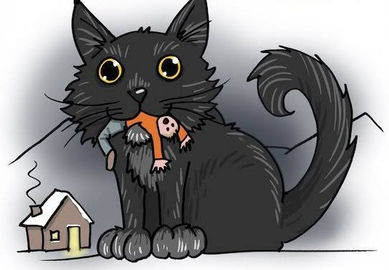
Christmas is known around the globe as a festival of 'Giving'. This tradition of gifting and donating is celebrated in many forms, primarily across the regions influenced by Christian faith. The early 20th century witnessed how the beverage giant Coca Cola made Saint Nicolas's alter ego Santa Clause go viral as the deliverer of gifts (haven't you noticed the iconic red and white?)
In Icelandic traditions, however, Christmas rituals subtly involve the influence from a more ancient Scandinavian mythology. It is believed that after the winter solstice, the forest-dwelling demons and giant creatures from mountains come down among humans. A popular one among them is Yule Cat. Yule cat would stalk and haunt anyone who doesn't have a new cloth on their body, may even eat up such small children.
This popular folklore, as always, traces its logical roots to the conventional economy of Iceland. Being a scantly populated and harsh cold country, the most common trade used to be Textiles and woollens were their most prominent exports. But to keep the economy prosperous, the entire household needed to contribute to the tough task of weaving and spinning the yarn. Only those who lend a hand would earn a new piece of woollens. And those who couldn't get the new clothes would be eaten up by the Yule Cat. Such was the belief popularized to keep the children obedient and contribute to the task. The threat of a giant cat creature worked just fine because furry cats were very common in Icelandic households those days.
Till this date, gifting a pair of socks, hat, sweater or any other woollen item on Christmas is considered a token of wishing well-being and prosperity to your near and dear ones in Iceland. And of course, beware of the Yule Cat🐈.
Comentários